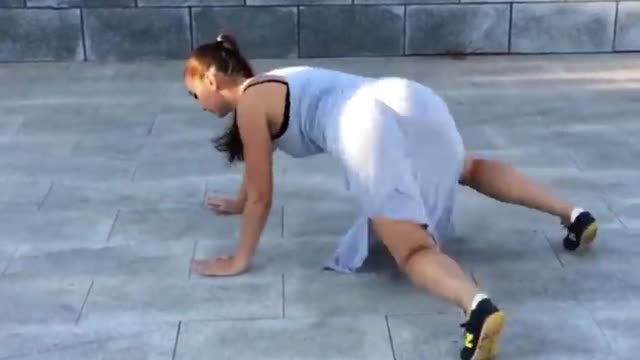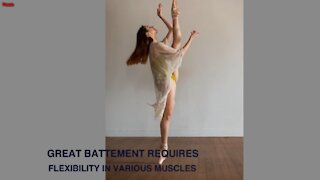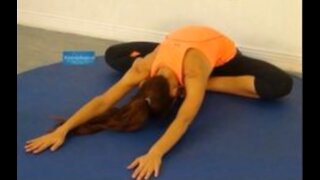Premium Only Content

Flexibility and Stretching
Flexibility and Stretching
An oversplit by former Olympic gymnast Irina Tchachina
Stretching cat
Flexibility or limberness refers to the range of movement in a joint or series of joints, and length in muscles that cross the joints to induce a bending movement or motion. Flexibility varies between individuals, particularly in terms of differences in muscle length of multi-joint muscles. Flexibility in some joints can be increased to a certain degree by exercise, with stretching a common exercise component to maintain or improve flexibility.
Quality of life is enhanced by improving and maintaining a good range of motion in the joints. Overall flexibility should be developed with specific joint range of motion needs in mind as the individual joints vary from one to another. Loss of flexibility can be a predisposing factor for physical issues such as pain syndromes or balance disorders.
Sex, age, and genetics are important for range of motion. Exercise including stretching and yoga often improves flexibility.
Many factors are taken into account when establishing personal flexibility: joint structure, ligaments, tendons, muscles, skin, tissue injury, fat (or adipose) tissue, body temperature, activity level, age and sex all influence an individual's range of motion about a joint. Individual body flexibility level is measured and calculated by performing a sit and reach test, where the result is defined as personal flexibility score.
-
 3:22
3:22
ElasticSteel
4 years agoGrand Battement Ballet Stretching Hamstrings Flexibility Kinesiological Stretching
388 -
 9:49
9:49
Stretching Made Easy
4 years ago $0.01 earnedButterfly Stretch For Flexibility With Kinesiological Stretching
165 -
 0:31
0:31
Stretching Made Easy
4 years agoStretching Exercises Balance System Side Split Straddle Flexibility EasyFlexibility
219 -
 5:27
5:27
Stretching Made Easy
4 years agoFlexibility Stretching Test How Much Flexibility Do You REALLY NEED
185 -
 0:50
0:50
Foam rolling exercise gym, Resistance bands, gym rings
3 years agoDynamic stretching
69 -
 14:38
14:38
Producer Michael
11 hours agoWE TRIED TO SELL OUR CARS AT CARMAX!
70.7K3 -
 5:36:05
5:36:05
a12cat34dog
10 hours agoI'VE NEVER PLAYED THIS GAME :: The Elder Scrolls IV: Oblivion Remastered :: FIRST-TIME PLAYING {18+}
42.6K7 -
 2:17:47
2:17:47
AlaskanBallistics
17 hours ago $16.90 earnedI Love this Gun Podcast #28
71.4K14 -
 3:12:28
3:12:28
tacetmort3m
16 hours ago🔴 LIVE - THIS GAME IS VERY FUN NOW - NO MORE ROOM IN HELL 2
31.7K -
 5:23:12
5:23:12
RalliedLIVE
13 hours ago $6.80 earnedWarzone Wins All Night w/ Ral
120K7